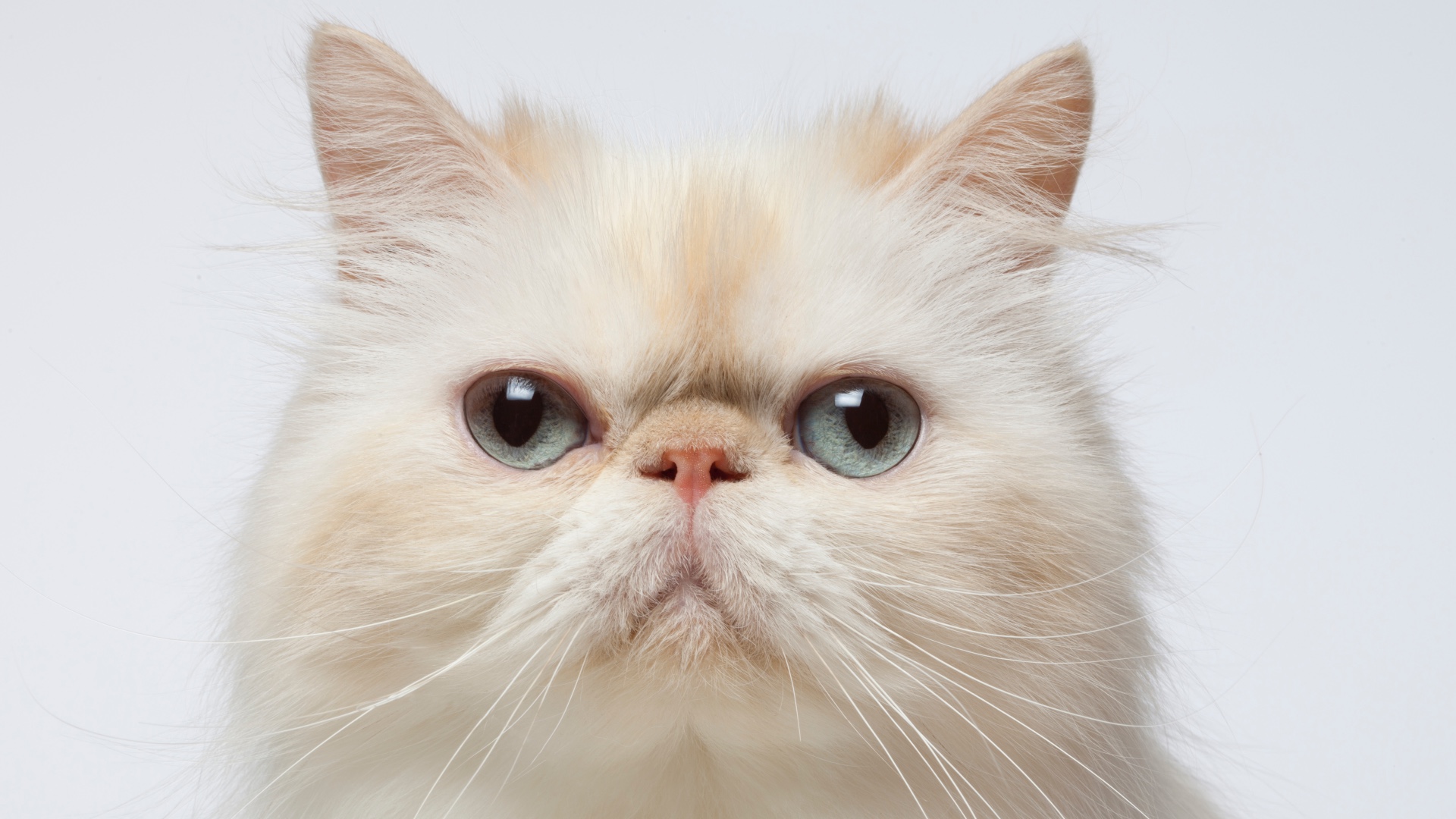Flat-faced cats can’t show emotion, a new study suggests
Research provides the answer on why flat-faced cats always look in pain, plus we show you how to care for them to keep them healthy

Flat-faced cats are some of the cutest kitties on the block, but according to research, it turns out these moon face sweethearts are unable to express emotions with the same ease as their narrow-faced counterparts. In a new study published in the Frontiers in Veterinary Science journal, cats with flat faces were more likely to consistently display pain-like expressions, even when they weren’t in pain.
Researchers analyzed pictures of over 2,000 cat faces and found that those with brachycephalic faces, known as flat-faced or smooshy-faced cats, were less able to effectively communicate and express themselves than cats with elongated or more proportioned faces. They were also more likely to look like they were in pain, even when they were frightened, anxious, or relaxed.
So, what does this mean if you’re a proud pet parent of a flat-faced cat? Lauren Finka, a postdoctoral research associate at Nottingham Trent University and co-author of the study, says that the permanent pain-like expression on the faces of flat-faced cats may cause owners to miss when their pet may actually be in pain and suggests that "it may be better to try and understand how our pets are feeling based on their behavior or posture rather than their faces."
- Best cat toys: Keep your feline friend occupied with these great toys
- The best cat food: Budget buys and premium picks
Permanently in pain
If you’re wondering how flat-faced cats came to have a permanently painful expression on their face, it turns out they have humans to thank. Breeds such as Persians and Himalayans are the result of selective breeding, resulting from a preference for cats with infant-like features and cute faces.
Their flat-like features, known as brachycephalic, result in very short muzzles, narrowed airways, shallow eye sockets, and excessive skin folding. It probably comes as no surprise that all this inbreeding brings with it a host of health problems, but that’s not all.
While most cats can change their facial expression depending on whether they’re feeling pain, fear, relaxation, or contentment, flat-faced cats have had their underlying facial structure drastically altered, disrupting their ability to express themselves clearly.
Researchers suggest that the findings of the study reveal that not only are we more attracted to animal faces that look cute or infant-like, but that we may also prefer those that look vulnerable as they bring out our nurturing instinct. While Finka would discourage people from purchasing breeds with heavily exaggerated features, if you are considering it or already have a flat-faced cat, here are a few tips on how to care for your furkid.
Get the best advice, tips and top tech for your beloved Pets
How to care for flat-faced cats

Some of the hottest Instagram cat accounts are those that feature the expressive eyes and cartoon-like appearance of the flat-faced feline. While these cute-as-a-button kitties deserve all their adoration, if you own one, it’s important to understand how best to care for them. Here’s a few ways you can help them stay in tip-top shape:
- Clean their eyes regularly by delicately wiping away any build-up of dust, debris, or discharge with a damp cloth. Use warm water (never hot) and soak it in a specialized cat-eye solution. Make sure the cloth doesn’t come into direct contact with their eyes.
- Keep luscious locks under control with daily brushing to prevent matted or tangled fur.
- As their nasal passageways can become easily blocked, wipe the nose daily with a wet cloth.
- The depth of their skin folds can be a breeding ground for bacteria, so ensure they have regular checkups with their vet to keep them free of bacterial or fungal skin infections.
While they may need a little more care and attention than your regular kitty, when looked after properly many flat-faced cat breeds make gentle and sweet pets.

Kathryn is a freelance writer who has been a member of the PetsRadar family since it launched in 2020. Highly experienced in her field, she's driven by a desire to provide pet parents with accurate, timely, and informative content that enables them to provide their fur friends with everything they need to thrive.
Kathryn works closely with vets and trainers to ensure all articles offer the most up-to-date information across a range of pet-related fields, from insights into health and behavior issues to tips on products and training.
When she’s not busy crafting the perfect sentence for her features, buying guides and news pieces, she can be found hanging out with her family (which includes one super sassy cat and a kitten), drinking copious amounts of Jasmine tea and reading all the books.
She has written for a range of publications, including Fit&Well, Top Ten Reviews, LiveScience, Goodto, and Product Hunt.
